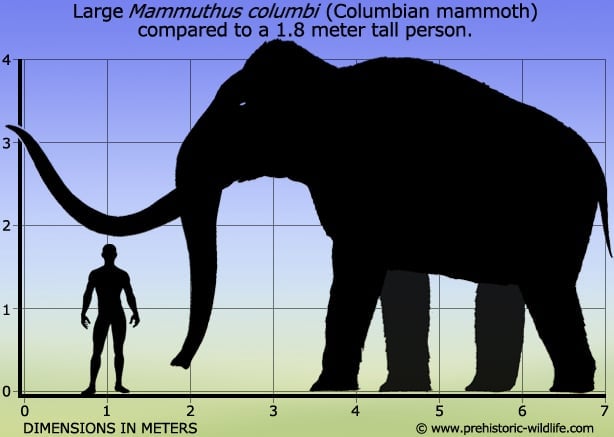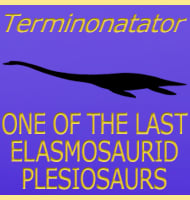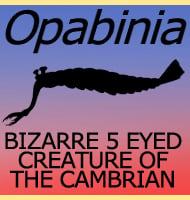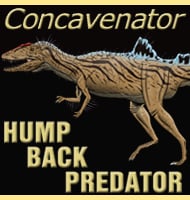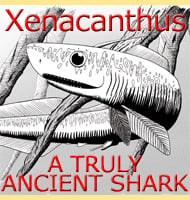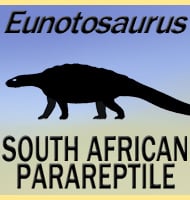In Depth
Mammuthus columbi is better known as the Columbian mammoth, although it is not actually named after the country Colombia that is in South America, but after the province of British Columbia in Canada. The Columbian mammoth appears to have been one of the most common mammoths roaming North America during the Pleistocene, and is thought to have come from mammoths that crossed the Bering land bridge from Asia into North America during the early Pleistocene at the latest. This would have been possible by fluctuating sea levels that would have been constantly rising and falling in connection with decreasing and increasing glaciations.
Compared to other mammoths, the Columbian mammoth is generally thought to have had a reduced covering of hair from those that were active in Eurasia. This is based upon the fact that North America is generally considered to have been warmer and less frozen than Europe during the Pleistocene, and an extensive covering of hair would have actually hindered the Columbian mammoths ability to cope with the warmer conditions.
One species of mammoth called M. exilis is thought to be descended from M. columbi. Better known as the pygmy mammoth, M. exilis is currently only known from the Californian channel islands where a population of Columbian mammoths are thought to have travelled to when the sea levels were much lower, and land masses larger, only to be cut off from the mainland when sea levels rose again.
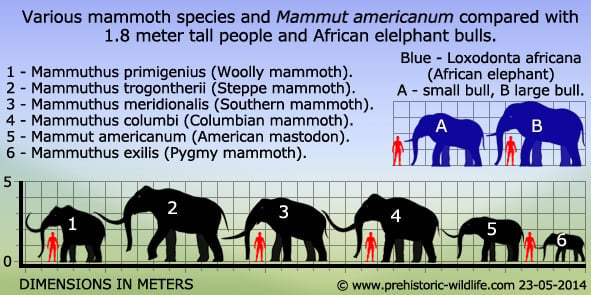
As with most of the North American megafauna, the disappearance of the Columbian mammoth remains an uncertain and controversial subject. Hunting by humans is considered to have been a contributing factor, with fossil sites indicating that mammoths were killed and processed by human hunters, although in seemingly insufficient numbers to wipe out the whole population.
Climate change has also been taken to be another contributing factor, and combined with increased hunting the stress may have been too great for the population to survive. Other current theories put forward include new diseases brought in from Asia by new migrants such as the first people, but these diseases would have to be so specialised that they would have affected all of the large megafauna while largely having little effect if any upon the smaller animals that exist to this day.
Another is that an air burst from a comet exploding in the upper atmosphere similar to the Tunguska event of 1909 caused continent wide devastation that starved the larger animal species into extinction. To further complicate matters some Columbian mammoth remains are claimed to have come from the early Holocene period several thousand years after all of these events are supposed to have wiped out the megafauna.
The only thing that remains fairly stable to say at this time is that populations of Columbian mammoths as with other megafauna at this time seem to have declined rapidly to a point that they could not recover from.
Further Reading
- – North American Proboscideans: Mammoths: The state of Knowledge, 2003. Quaternary International. 126-128: 73–25. – Larry D. Agenbroad.
- – Advances in proboscidean taxonomy & classification, anatomy & physiology, and ecology & behavior. – Quaternary International. 126–128: 5. – J. Shoshani & P. Tassy – 2005.
- – Columbian mammoth petroglyphs from the San Juan River near Bluff, Utah, United States. Rock Art Research: The Journal of the Australian Rock Art Research Association (AURA), Vol. 28, No. 2 – Ekkehart Malotki & Henry D. Wallace – 2011.
- – New skeletal remains of Mammuthus columbi from Glynn County, Georgia with notes on their historical and paleoecological significance. – Southeastern Naturalist. 11 (2): 163–172. – D. B. Patterson, A. J. Mead & R. A. Bahn – 2012.
- – Geographic variation of diet and habitat of the Mexican populations of Columbian Mammoth (Mammuthus columbi). – Quaternary International. 276–277: 8–16. V. C. A. N. Pérez-Crespo, J. N. Arroyo-Cabrales, M. Benammi, E. Johnson, O. J. Polaco, A. Santos-Moreno, P. Morales-Puente & E. Cienfuegos-Alvarado – 2012.
- – Attempted DNA extraction from a Rancho La Brea Columbian mammoth (Mammuthus columbi): Prospects for ancient DNA from asphalt deposits. – Ecology and Evolution. 4 (4): 329–336. – D. A. Gold, J. Robinson, A. B. Farrell, J. M. Harris, O. Thalmann & D. K. Jacobs – 2014.
- – Friesenhahn Cave: Late Pleistocene paleoecology and predator-prey relationships of mammoths with an extinct scimitar cat. – Late Cretaceous to Quaternary Strata and Fossils of Texas: Field Excursions Celebrating 125 Years of GSA and Texas Geology, GSA South-Central Section Meeting, Austin, Texas, April 2013. pp. 15–31. – Russel W. Graham, Ernest L. Lundelius, Laurence Meissner & Keith Muhlestein – 2014.
- – Late Quaternary sea-level history and the antiquity of mammoths (Mammuthus exilis and Mammuthus columbi), Channel Islands National Park, California, USA. – Quaternary Research. 83 (3): 502–521. – D. H. Muhs, K. R. Simmons, L. T. Groves, J. P. McGeehin, R. Randall Schumann & L. D. Agenbroad – 2015.
- – Mammuthus population dynamics in Late Pleistocene North America: divergence, phylogeography, and introgression. – Frontiers in Ecology and Evolution. 4. – Jacob Enk, Alison Devault, Christopher Widga, Jeffrey Saunders, Paul Szpak, John Southon, Jean-Marie Rouillard, Beth Shapiro, G. Brian Golding, Grant Zazula, Duane Froese, Daniel C. Fisher, Ross D. E. MacPhee & Hendrik Poinar – 2016.
- – Diet and habitat for six American Pleistocene proboscidean species using carbon and oxygen stable isotopes. – Ameghiniana. 53 (1): 39–51. – V. A. Pérez-Crespo, J. L. Prado, M. T. Alberdi, J. Arroyo-Cabrales & E. Johnson – 2016.
- – A simulation of anthropogenic Columbian mammoth (Mammuthus columbi) extinction. – Historical Biology. 31 (5): 610–617. – M. Klapman & A. Capaldi – 2019.
